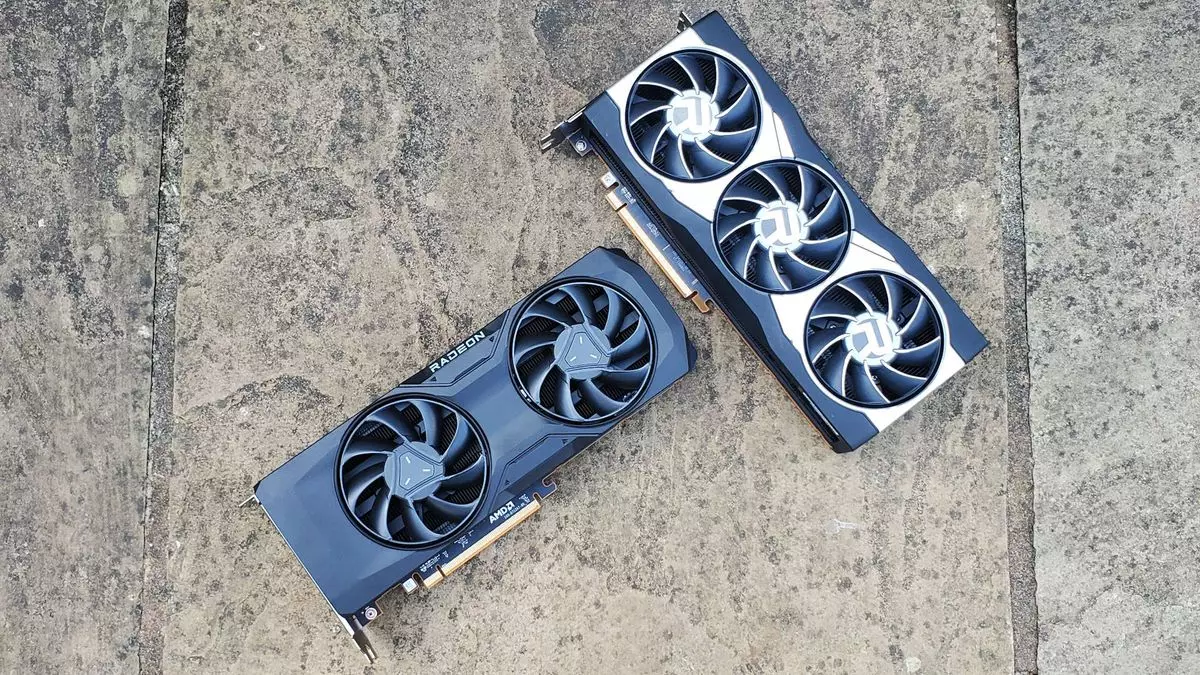The ongoing saga of AMD’s challenges in the gaming graphics processing unit (GPU) market continues to baffle industry observers, especially in light of the company’s impressive performance in other sectors. Despite notable advancements in areas such as data center CPUs and AI-driven tech, AMD’s gaming revenue has endured significant setbacks, particularly in the PC gaming landscape. The recent earnings call led by CEO Lisa Su has reignited discussions about why the company struggles to secure a more dominant position in this lucrative sector.
AMD recently announced a record-high revenue of $6.8 billion for the third quarter, bolstered primarily by growth in data center solutions and client CPUs for laptops. However, this landmark achievement was overshadowed by the glaring 69% year-over-year drop in gaming revenues, plummeting to $462 million—an alarming figure that constitutes less than 10% of the company’s overall income. While Su attributes this decline partially to the cyclic nature of console sales, which naturally slow as models age, the sharp downturn in PC gaming sales suggests deeper issues at play.
In the gaming context, AMD primarily refers to its graphics cards and custom APUs for consoles, like the Xbox and PlayStation series. The anticipation surrounding the upcoming PlayStation 5 Pro offers a silver lining, hinting at potential recovery. Nevertheless, AMD’s overall struggles in the PC graphics card segment remain a significant concern, further intensified by the company’s lack of specific revenue data on this product category.
One compelling theory behind AMD’s GPU woes revolves around its strategic shift to a chiplet-based architecture. Initially celebrated for its efficiency in CPU production—allowing for cost-effective and flexible configurations—this methodology has yet to yield similar success in the GPU realm. The transition from a unified monolithic design, embodied by the successful Radeon RX 6000 series, to the chiplet architecture seen in the RDNA 3 products has yielded mixed results. Analysts have noted that while AMD aimed to capitalize on chiplet technology for high-performance gaming GPUs, the execution has not met market expectations.
The RDNA 3 architecture, with models like the RX 7700, 7800, and 7900, has not been able to compete effectively against Nvidia’s offerings. This has prompted speculation that AMD may have overestimated the viability of chiplet designs in delivering optimal gaming performance. Recent discussions indicate that AMD is reconsidering its approach for the upcoming RDNA 4 line, moving back toward a traditional monolithic design, albeit with a focus away from the high-end market. This pivot suggests that perhaps AMD has not yet fully grasped how to translate the chiplet advantages seen in CPUs into a competitive GPU landscape.
While AMD’s recent shifts indicate a learning curve within the GPU segment, the broader context of its financial success raises questions about its strategic direction. The burgeoning field of AI has captured AMD’s focus, with the company announcing substantial revenue growth in AI GPUs—a sector previously negligible in its income streams. The overlapping growth of AI and cloud computing services aligns with AMD’s ambition to expand its portfolio beyond traditional markets. However, it raises concerns that the company might be prioritizing new, trendy technologies at the expense of its foundational gaming GPU lines.
Despite the mixed signals from AMD’s gaming division, the company is hardly in a precarious position financially. Lisa Su’s leadership has established a robust foundation for the company, indicating that with the right strategy and investment, AMD has the means to rejuvenate its gaming GPU segment. The challenges it faces, while significant, are not insurmountable. Industry analysts note that as AMD continues to innovate and adapt, the company may very well emerge as a formidable player once again in the competitive landscape of gaming technology.
AMD’s challenges in the gaming GPU market stand in stark contrast to its triumphs in other areas of technology and innovation. With a notable decline in gaming revenues tied to broader market trends and internal architectural decisions, AMD finds itself at a crossroads. As the gaming industry evolves and AMD prepares to launch its next generation of RDNA GPUs, only time will reveal whether the company can navigate this turbulent terrain and reclaim a significant share of the gaming GPU market. The promise of new technologies—including AI and potential shifts in GPU design—may offer the key to unlocking AMD’s gaming potential, provided that the company can pivot effectively from its past missteps and capitalize on forthcoming opportunities.

